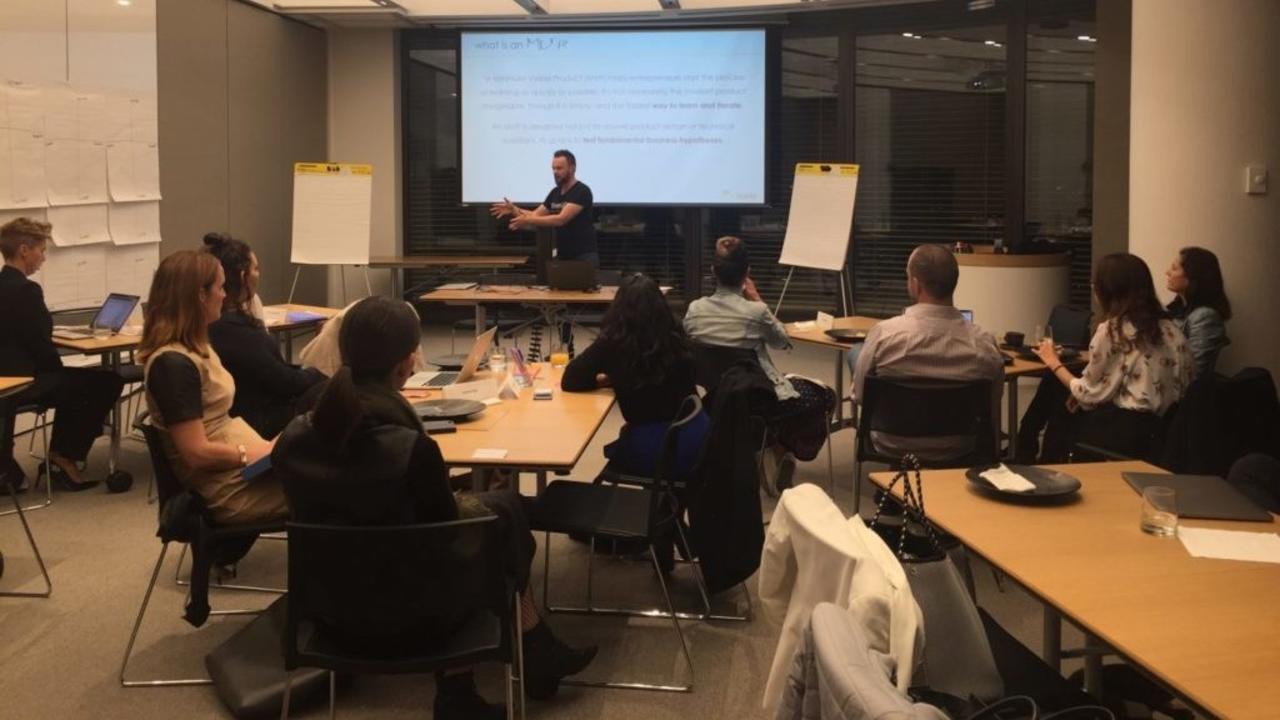Robust Theme
Dec 09, 2019 2020-04-08 7:40Robust Theme
Behind the Scenes: The First Version of Your Product

Building your first tech product doesn’t have to be hard and time-consuming
Adam Faulkner founder at Blueegg, a User Experience Agency, was the presenter for our workshop this week that cover the MVP. Blueegg is focused on working with their clients to deliver insightful, tested experiences. They were founded on the basic principle that user experience, UX, is fundamental to everything we do.

"The very first product I built took over a year and an investment of $60K."
After many sleepless nights, I finally launched my website. I was excited! This was what I had been working on for so long, I had given it everything I had and more. Imagine my disappointment when I realized that the product I had invested so much of my time and money towards, no one wanted.
Navigating the tech space, learning the tech speak and building your first tech product can be overwhelming and isolating when operating from home. I remember the first time I walked into a coworking space I was excited to take the plunge and felt more connected to the startup world. I was fortunate enough to be surrounded by a community of entrepreneurs who were able to understand my challenges and provide mentorship. I also benefitted from motivational accountability by mentors giving me a nudge in the right direction whenever I needed it.
"By joining the community and mingling with other like-minded entrepreneurs, it gave me a sense of inclusion into a world that at the time I knew very little about."

In the product development world, an MVP (or minimum viable product) refers to the very first version of your product. Your MVP has just enough features to launch but isn’t your final product. The term was popularised by Steve Blank and Eric Ries in The Lean Startup. It can sound a bit confusing if you haven’t heard of it before but the main idea behind an MVP is to gain the insight into whether your product is going to solve your customer’s needs before you invest in complex or expensive tech development.
An MVP provides first-hand insight into how users will interact with your product and provides feedback on how it can be improved. Building an MVP is far less costly and time-consuming than developing a product and it ensures you’re building something that customers really want. Early adopters don’t mind that your product isn’t 100% complete. Instead, if your app is solving a real problem for them they’ll be excited that they’re the first ones to try it out and can offer their suggestions on what would make it better.
Below are some of the different ways to build an MVP:
- Explainer Video
Creating a brief explainer video of what your product is, the key features and value it provides is a great way to gauge the interest of your potential customers. Your product does not even need to be created for the video. A simple prototype or clear description is enough as long as it provides an accurate explanation of how your product will solve the customer problem.
- Landing Page
Creating a landing page before you have finished building your product helps you to build a list of followers and spread the word about your product. Landing pages also help you to gain information about your target market, including gathering their feedback on your product.
- Wizard of Oz or Flintstoning
This version of an MVP creates the illusion of a real and fully functional product while it is being run manually behind the scenes. The MVP gets its name from the Wizard of Oz or The Flintstones as in both of these instances the automation is faked with a manual back end, i.e. Fred Flintstone powers his car by running on the ground.
- Piecemeal
The piecemeal MVP uses existing tools and solutions in the market to create and deliver your product. This could be using a survey creator and pairing it with a manual email to give the illusion of automation. It is a great way to introduce your product to your customers without the financial investment of having to build out a fully functioning automated product.
- Paper Prototype
This is the MVP we help you create in the Tech Ready Program. Creating a paper prototype of your idea will give your customers something tangible you can put it in their hands and they can interact with it. It also allows you to get early-stage feedback on the user journey and the essential features before you build your app or website.
By creating an MVP you can test your idea while saving valuable time and money
If you want to learn more about MVP’s and how you can build one, send me a message here.


